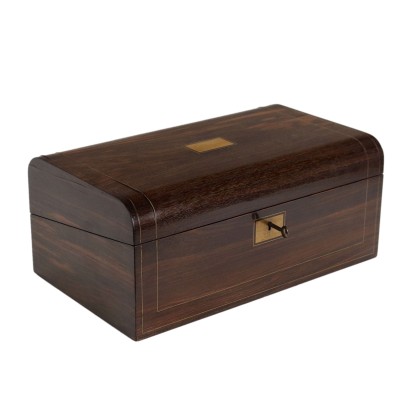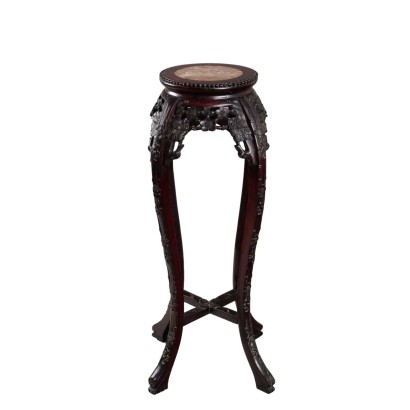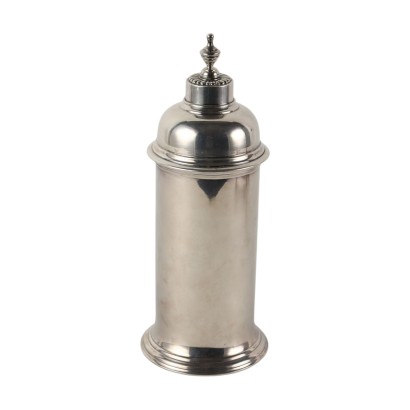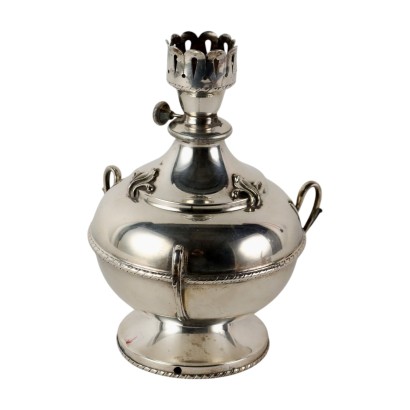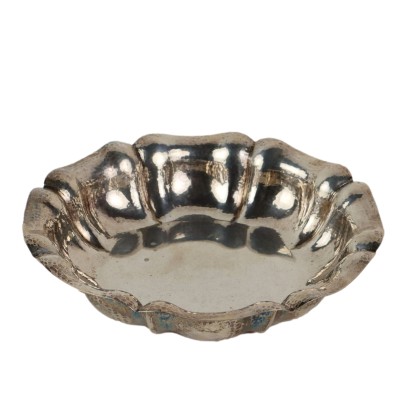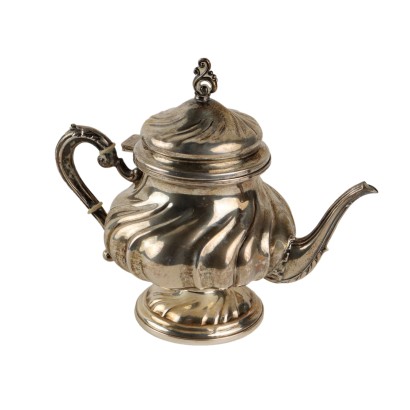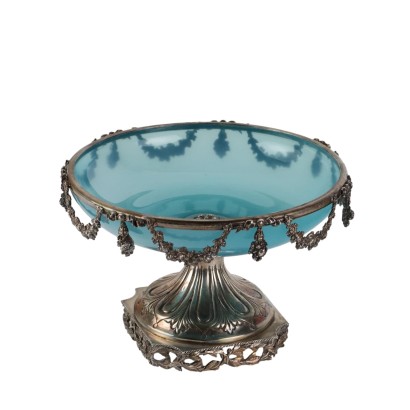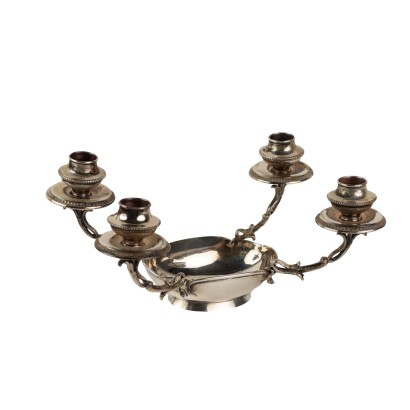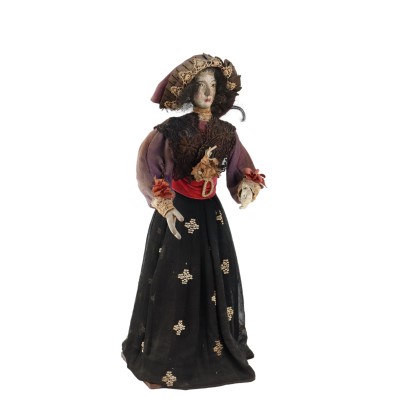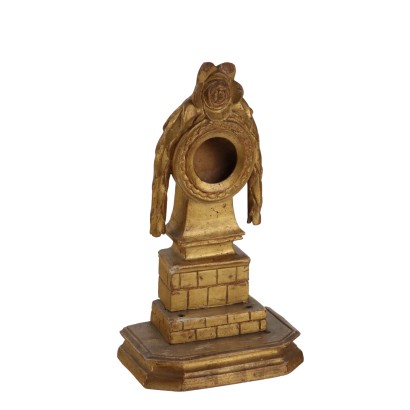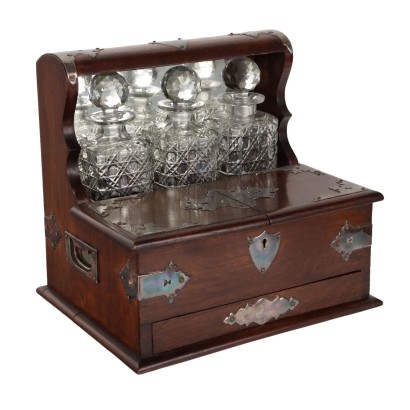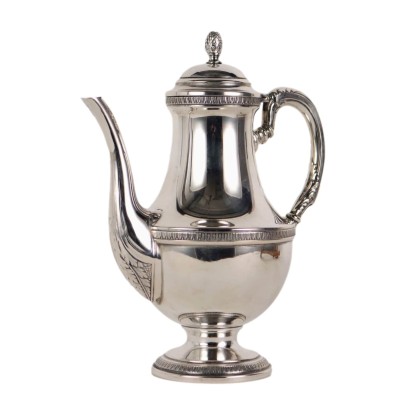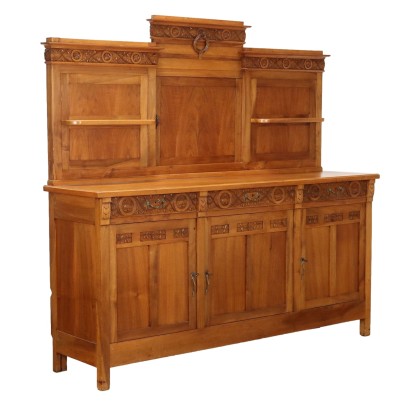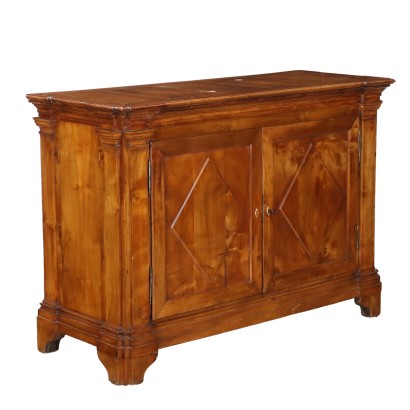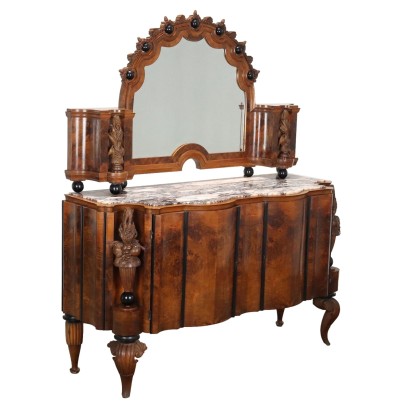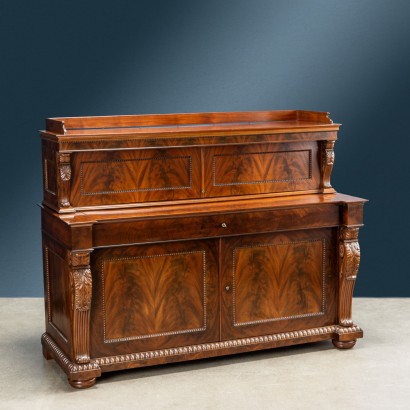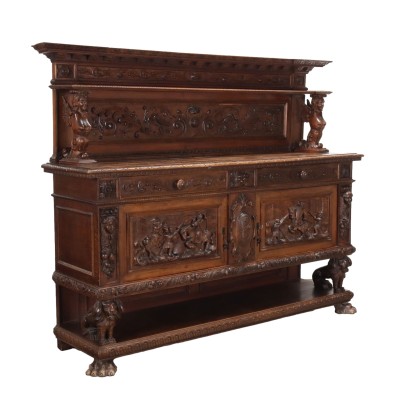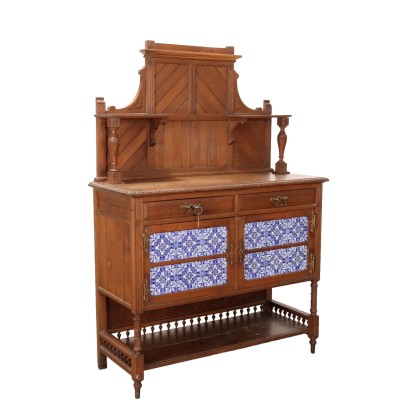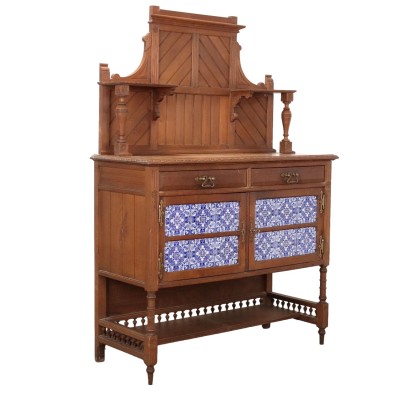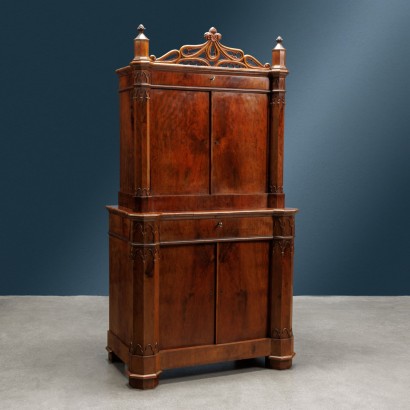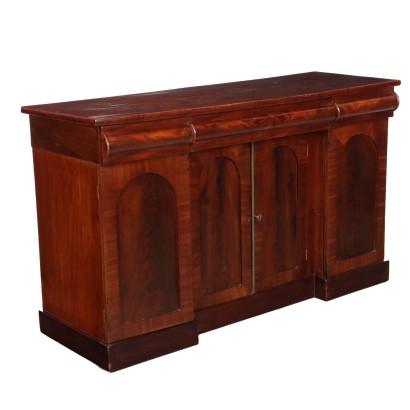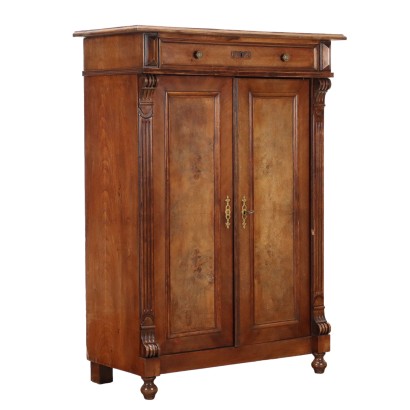Antique Writing Desk Mahogany Citronnier England XIX-XX Century - England, Late XIX - Early XX Century
Features
England, Late XIX - Early XX Century
Age: 19th Century / 1801 - 1900 , 20th Century / 1901 - 2000
Origin: England
Main essence: Mahogany , Rosewood
Material: Wood
Description
Travelling desk in mahogany veneered in rosewood. External profiles and inserts in bronze. Inside, storage compartments, secret compartment with spring mechanism and shelf covered in gold-decorated paper. Hinges and locks in bronze engraved with leafy scrolls. Pair of contemporary glass inkwells. Working lock.
Product Condition:
Item in good condition, shows small signs of wear. We try to present the real condition of the item as completely as possible with the photos. If some details are not clear from the photos, what is reported in the description is valid.
Dimensions (cm):
Height: 18
Width: 40
Depth: 24
Additional Information
Age:
19th Century / 1801 - 1900
19th Century / 1801 - 190020th Century / 1901 - 2000
20th Century / 1901 - 2000Main essence:
Mahogany
It is one of the most precious and sought-after woods in cabinet making. It was discovered in Central America around 1600 and began to be imported to England in the 1700s. Much appreciated for its hardness and indestructibility, it became widespread following the blocking of walnut exports from France in 1720 and the consequent elimination of English import duties on mahogany from the colonies in America and India. The most valuable version comes from Cuba, but it became very expensive. At the end of the 18th century it began to be used also in France in Louis XVI, Directory and Empire furniture, its diffusion declined starting from when Napoleon, in 1810, forbade its import. It was generally used in the manufacture of elegant furniture, due to its characteristics and beautiful grain.Rosewood
Under the term Rosewood various exotic, hard and heavy woods have been united, characterized by a color that varies from pink to violet. Their origin is usually from Latin America, India and Africa and are still considered very valuable woods. Until the end of the eighteenth century, this name also referred to the bois de violette . In general, rosewood woods began to be imported into Europe starting in 1750 and were first used for veneers and inlays in England, flanked, by contrast, with lighter woods. Later, entire valuable furniture was manufactured both in England, mainly in the Regency style, and in France, starting from the Neoclassical period.Material: Wood
Other customers have searched:
Se ti interessano gli oggetti d'arte e antichi Scopri qui tutte le presentazioni degli oggetti più belli, eleganti e preziosi su FineArt by Di Mano In Mano
Leggi di più
Sull'antiquariato in generale dai un'occhiata anche a:Classic Monday: da un pezzo dei nostri magazzini alla storia dell'antiquariato
L'antiquariato dalla A alla Z: il Dizionario dell'Antiquariato
Il dizionario dell'antiquariato - Lastronatura
Il dizionario dell'antiquariato - Mascherone
Il dizionario dell'antiquariato - Natura morta
Il dizionario dell'antiquariato - Opificio
Il dizionario dell'antiquariato - Pastiglia
Il dizionario dell'antiquariato - Savonarola
Il dizionario dell'antiquariato - Rosone
Product availability
The product can be seen at Cambiago
Immediate availability
Ready for delivery within 2 working days from ordering the product.



